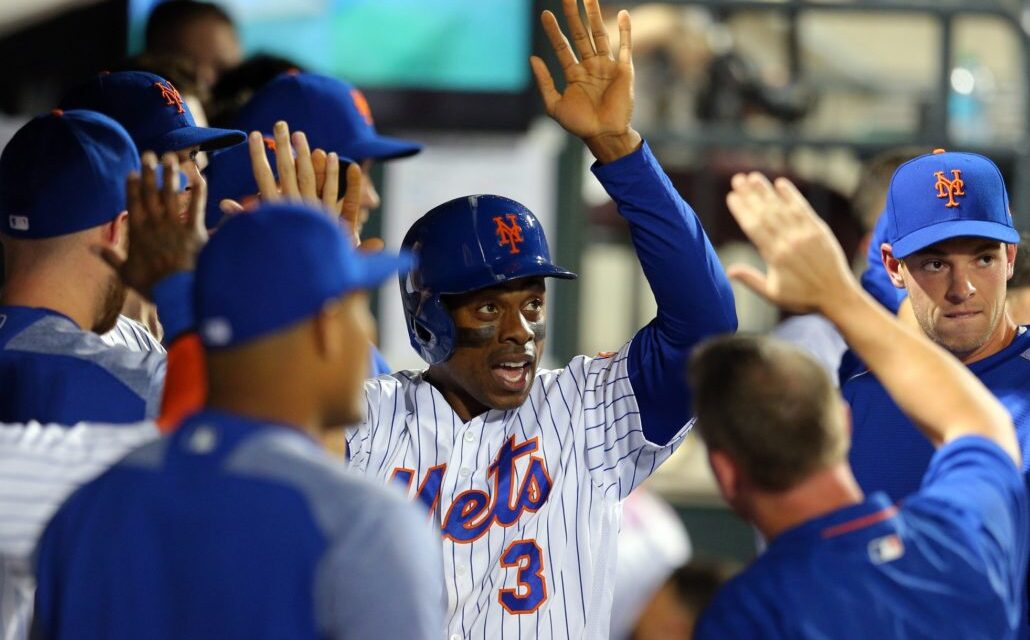
It doesn’t matter whether he spent any time playing for your favorite team or not — Curtis Granderson is a guy everyone wants to root for. As New York Mets fans, we were just lucky enough to be one of the teams he did suit up for during his 16-year big-league career.
Him making the move from the Bronx to Flushing was also pretty significant. As Sandy Alderson went through the process of rebuilding the Mets in advance of their 2015 World Series appearance, there wasn’t a whole lot of money being spent on talent. That’s why it opened eyes when Grandy signed on the dotted line for a four-year, $60 million deal ahead of the 2014 campaign.
Was there risk involved? Well, sure — that’s the case with every significant acquisition an MLB team makes. But with Granderson, New York was getting the most model citizen they could possibly find externally, a veteran leader in the clubhouse, and a dude who knew his way around the diamond.
His three-and-a-half years with the organization featured a little bit of a roller coaster ride from an overall fWAR output (1.2, 5.3, 3.1, 2.3). When looking at everything being equal, though, that was more because of his defensive production than anything else.
When I think about watching Granderson on the field every night, I remember him being a streaky hitter. From the standpoint of his batting average, any month could bring a number above .300 or below .200. It was everything else he did on offense that allowed him to minimize the valleys of his production while also maximizing the peaks he experienced.
Here’s a quick look at how his Mets career went from the basis of season-long statistics.

Grandy had his daily ups and downs just like any other ballplayer. But when the dust settled after Game 162 with the Mets, his numbers didn’t really move all the much. While his power consistently increased — both evidenced by his home-run totals and ISO — his plate-discipline numbers barely budged.
His batting average rarely looked impressive, but he never let that take focus away from his overall approach. During his time with the Mets, Grandy’s on-base percentage dipped below .330 just once. That happened in his first year with the organization, and that number settled in at .326.
This was aided by the plate approach he brought to the park every single night. Although Granderson’s swing rate ended up dipping down to career-low levels by the time his tenure in Flushing was complete, he made the most of his contact. Here’s a look at how his chase rate (O-Swing%), swing rate on strikes (Z-Swing%), and the corresponding contact rates evolved from year to year.

It also shouldn’t be surprising that this increased selectivity at the plate also brought some better numbers in Grandy’s batted-ball profile. His line-drive rate increased after his first year with the Mets, as did his hard-hit rate.
Obviously, none of this would’ve been possible if Granderson couldn’t stay healthy enough to take the field nearly every day. The above plate-appearance numbers show us he was running out there consistently each year. His games-played numbers also back that up — he suited up for 155, 157, and 150 games between 2014 and 2016, along with another 111 in 2017 before getting traded to the Los Angeles Dodgers in August of that year.
When Granderson signed with the Mets, the thought of him and David Wright leading the way as veterans was fun to think about as two awesome dudes everyone has respect and love for around the game. And for a young team nearing the end of a rebuild, it was nice to have another veteran voice in the clubhouse. After 2014, though, Granderson was the main one out of these two since Wright’s injuries started taking hold and forcing him to be away from the club for long periods of time to try and rehab his way back.
Having an accomplished veteran in the clubhouse like Granderson was exactly what the club needed, especially in 2015 and 2016. Being healthy enough to take the field and actually produce from a statistical standpoint made it that much easier to lead.
I can’t find anything on the Google machine, but if memory serves me right, the Mets were rumored to be pursuing Granderson on a three-year deal, and even though he was coming off an injury-marred season, the then-33-year-old was looking for four years. If I’m remembering correctly, the Mets certainly rolled the dice on committing to the outfielder through his age-36 campaign, but it ended up being a worthy investment, I’d say.















